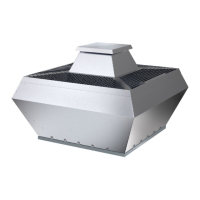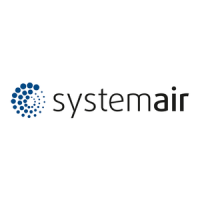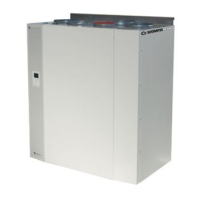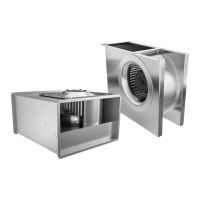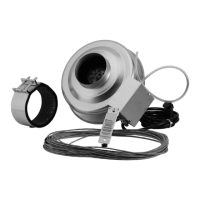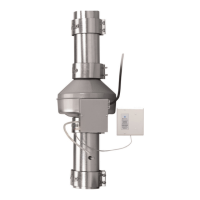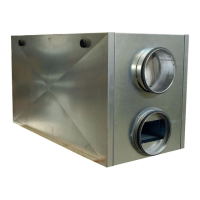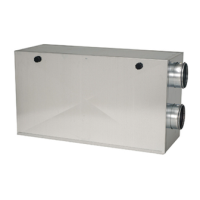18
| Troubleshooting/maintenance/repair
Troubleshooting cont'd
Fan does not reach
nominal speed
Defective motor winding
Contact Systemair
Improperly aligned drive motor
Contact Systemair
Control units (if used) such as
frequency converter or
transformer are set incorrectly.
Correct the settings of the control units.
Mechanical blockage Remove the blockage.
Motor does not
rotate
Faulty supply voltage Check the supply voltage, re-establish the voltage supply.
Faulty connection
Disconnect from the power supply, correct the
connection, see circuit diagram.
Temperature monitor has
responded.
Allow the motor to cool down, find and resolve the cause
of the fault.
Electronics/motor
overheated
Insufficient cooling Improve cooling.
Overloaded motor
Check if the correct fan is used for your application.
Ambient temperature too high Check if the correct fan is used for your application.
Note:
For all other damage/defects, please contact Systemair. Defective safety-relevant fans (for Ex and smoke
extraction applications) must be replaced completely.
12.2 Maintenance
Warranty claims can only be made if maintenance work is carried out correctly and written evidence thereof is
provided.
We recommend regular maintenance intervals to ensure continuous fan operation. These maintenance intervals are
specified in the “Activities” table below. In addition, the operator must carry out follow-up activities such as cleaning,
replacing defective components or other corrective measures. For traceability reasons, a maintenance plan must be
created which documents the work carried out. This must be created by the operator. If the operating conditions are
"extreme", the maintenance intervals must be reduced so that maintenance is carried out more frequently. Examples
of extreme operating conditions:
• Kitchen exhaust fans
• Ambient temperature > 40 ºC or < -10 ºC, or temperature fluctuations > 20 K
Table 16 Activities
Normal operating
conditions
Extreme operating
conditions
Activity
Every six
months
Annually Quarterly
Every six
months
Check the fan and its components for visible damage,
corrosion and contamination.
X X
Check the impeller for damage and imbalance.
X X
Check the condensate drain is working correctly.
X X
Clean the fan/ventilation system (see 13 Cleaning, page
19).
X X
Check the screwed connections for damages/defects and
check that they are firmly seated.
X
See normal operating
conditions
Check the fan intake is free from contamination.
X X
Check that the fan and its components are being used
correctly.
X
See normal operating
conditions
Check the current consumption and compare this with the
rated data.
X X
